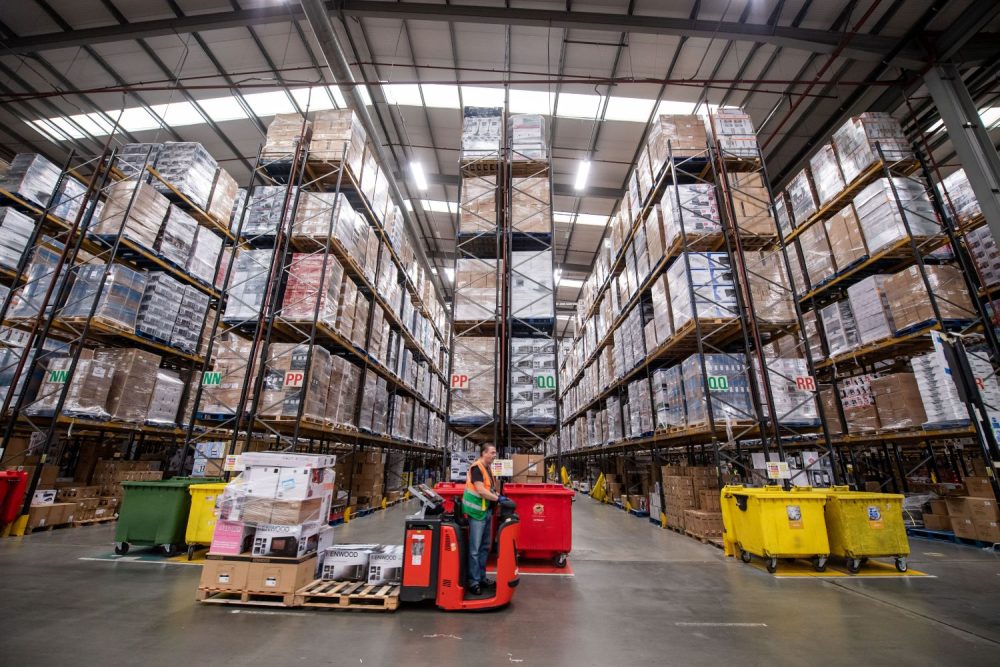U.K.-based Currys is a leading omnichannel retailer of technology products and services, operating online and through 829 stores in seven countries. The group’s operations are supported by a sourcing office in Hong Kong, state-of-the-art repair facilities and an extensive distribution network to facilitate delivery to stores and homes.
According to the group’s mission statement, when Currys talks about “omnichannel,” it’s not just about customers having a choice of going into a store or buying online. It’s about everything in unison. For example, a customer in the store can now use an in-store tablet to access the group’s full range online then order a delivery to their home. This allows every store, whatever its size, to offer the full range to every customer. On the flip side, customers can order online and collect in store, often within an hour. And if a customer buys online, he or she can still use in-store services to help them installation, set up, repair, trade in and recycle their tech.
At the 2022 World Retail Congress in Italy, Currys CEO Alex Baldock outlined the group’s strategy and philosophy with regard to omnichannel in the post-Covid era.
Demand, Cost and Competition Headwinds
“We all know retail will change more in the next five years than it has in the last 50,” said Baldock. According to the CEO, when it comes to retail post pandemic — particularly omnichannel retail — it’s windy out there. Store-based retail is facing into demand, cost and competition headwinds as consumers fundamentally change the way they shop. Retail is getting less of the consumer’s disposable dollars, and softening demand means there is also less to go around with many more mouths to feed.
“There’s still over capacity in retail – too much store space — and online has added to that capacity without adding to overall demand; it hasn’t been incremental,” said Baldock. “The pandemic has accelerated this already stark change. New players in the delivery sector have changed consumer expectations of convenience and immediate gratification: I want it, I want it now, I want it without any of the friction of delay. The customer is delighted; all this is great for them. Now they have loads more choices, convenience and value for money, with retailers kept on their toes and having to pull out their A-game. So, what’s an omnichannel retailer got to offer? It risks being an intermediary between supplier and consumer, a bland box shifter: that’s neither a secure nor a lucrative existence today.
“So, do we have to content ourselves with this diminished margin and precarious role? No. I am bullish on large omnichannel retail if done right. Big tech retailers like Best Buy, FNAC Darty and Currys have faced into the big question: ‘What is our purpose?’ The answer starts with the customer, as it must, and what do they value and what are they willing to pay for. If you overlay this with your strengths as a large omnichannel retailer, where these two things overlap, that’s where omnichannel can play and win.”
Making Tech Easy to Buy
All the big global tech retail players have boiled this down to one central consumer insight: customers find tech exciting, but they also find it confusing, as well as expensive.
Today, technology is a sustainably larger market than it was pre-pandemic. People’s attitudes towards tech have changed, as it’s become more central to their lives, keeping them connected, fed, clean, entertained and allowing them to work flexibly. However, tech customers still need help to choose the right tech, afford it and get the most out of it.
“At Currys we are building on this through our omnichannel model, making it easier for customers to shop and giving every customer, whether they’re shopping online or in-store, the benefits of both channels,” said Baldock.
Of course, it’s important to never be out of stock for the customer, to have the right product for the right customer somewhere in the network and to offer 24/7 help.
“Eight out of 10 of our customers cite employees as the reason for a great experience – making them our greatest advantage,” said Baldock. “And we don’t just offer this great colleague experience in-store. Customers love our ShopLive video calling solution, with 34,000 of them using it each week to speak to an instore colleague – accessing our expert help and advice from the comfort of their own sofa. Through stores and online working together, customers can also get their hands-on products faster.
Building Loyalty
Omnichannel shopping and frequency are key loyalty drivers, with customers who shop across both stores and online 27 percent more likely to return. However, services, and credit especially, are the strongest loyalty and frequency drivers of all, said Baldock.
The CEO says his group plans to go even further in this respect: “We plan to provide even more services that will help customers to afford and enjoy their technology for life and as the market leader, and the only remaining omnichannel specialist, we are uniquely positioned to do this. With over 9.5 million services customers in the U.K., we have a huge opportunity to build even stickier omnichannel propositions that build greater loyalty, and the possibilities seem endless.”
He concluded: “It’s fair to say, for all the headwinds out there, we love omnichannel. When you look at tech retail in every market, omni wins. At Currys, our omnichannel strategy to date has led to happier colleagues, happier customers (who are more likely to return) and a financially stronger business. And we’ve only just begun. There’s so much more yet to come.”
So who are going to be the winners and who are going be the next blockbusters in the next years? Some might think it’s going to be the big pure play gorillas, but according to Baldock, the evidence is pointing towards omnichannel retailers who give customers “the best of both the store and online worlds.”















